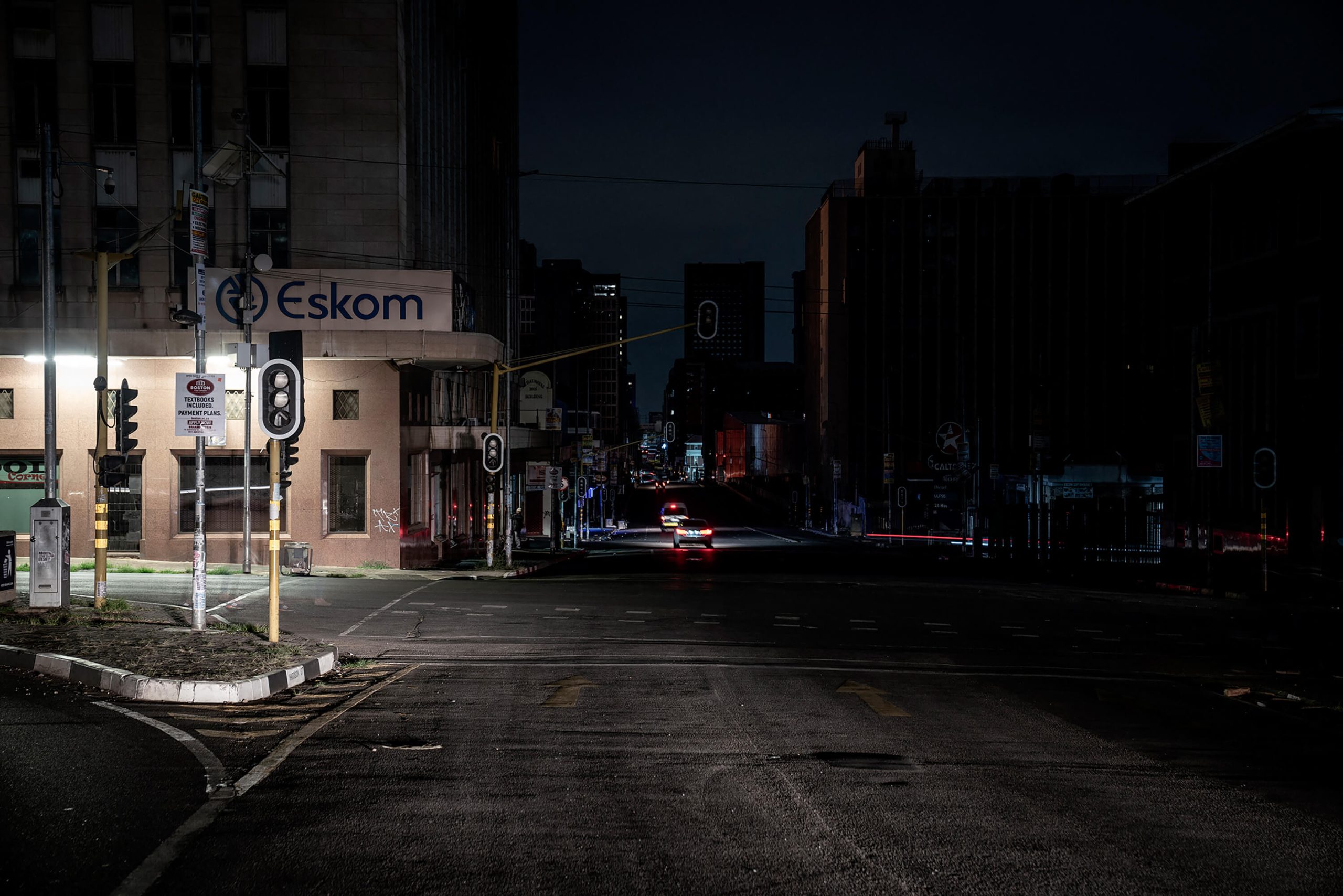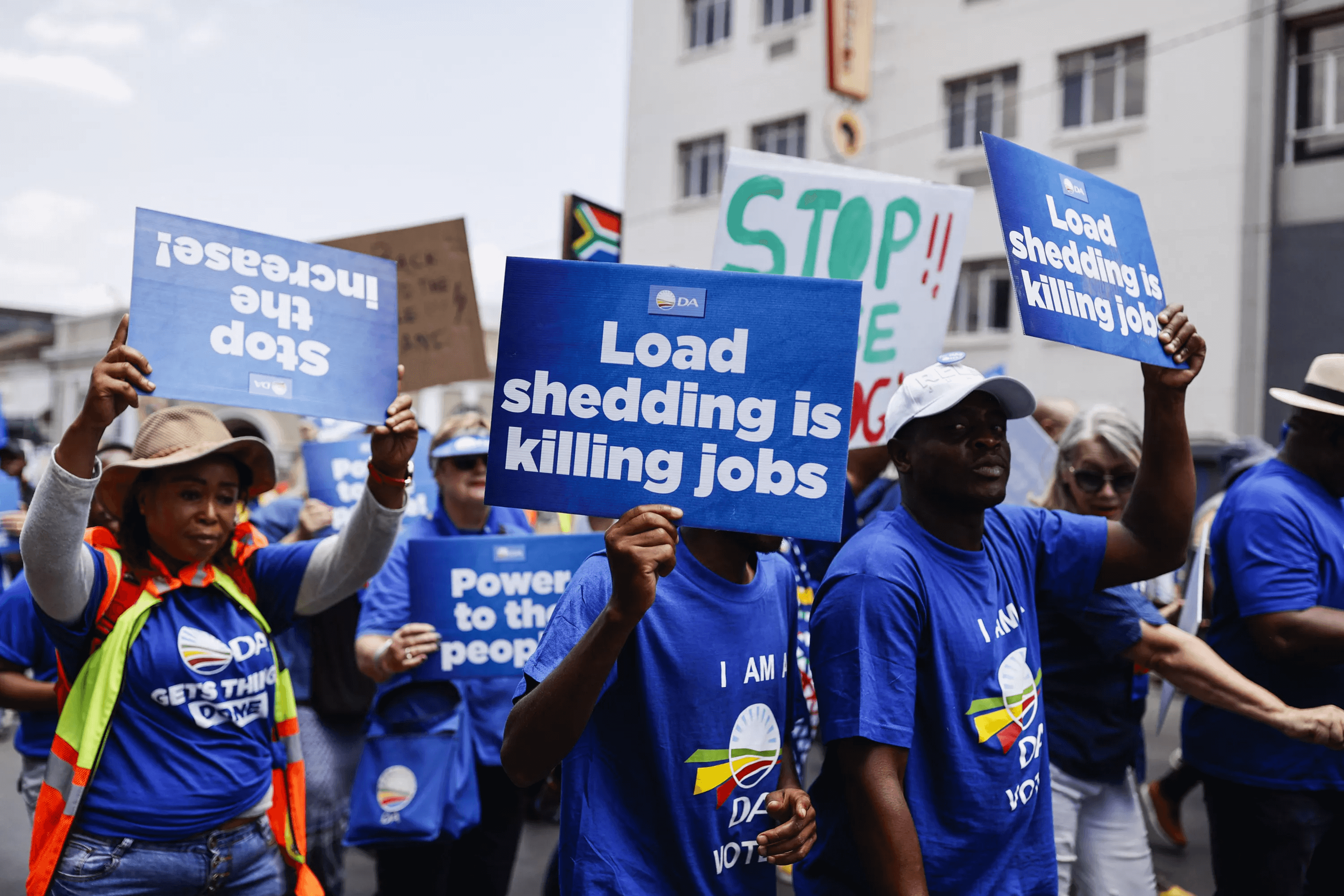South Africa’s President, Cyril Ramaphosa, has declared a state of national disaster amidst unprecedented blackouts. As electricity production becomes more unstable, households and businesses have been facing power outages (known as load-shedding), sometimes for as long as 12 hours a day, badly impacting the economy and the livelihoods of the country’s roughly 60 million people.
In his latest state of the nation address, Ramaphosa admitted that the country’s “debilitating electricity shortage has caused immense damage to our economy” and has impeded recovery from the impact of the COVID-19 pandemic, during which South Africa lost 2 million jobs, and from the subsequent “catastrophic” flooding.
We gather here at a time of crisis.
Our country has, for many months, endured a debilitating electricity shortage that has caused immense damage to our economy. https://t.co/VhX6ug891l
— Cyril Ramaphosa 🇿🇦 (@CyrilRamaphosa) February 9, 2023
Rolling blackouts
South Africa has faced widespread national blackouts over the past 15 years as the power generation capacity of the state-run Eskom company continued to decrease. The crisis was aggravated in 2022 when there were over 200 days of power cuts and this has worsened even further in 2023.
The country currently runs an eight-stage load-shedding schedule, in other words, black-out periods. At stage one, households are cut off from the electricity supply for 2.5 hours a day. This becomes progressively higher as the stages increase with the current stage 8 being three black-out times a day of 4.5 hours each, equating to 13.5 hours. Over the past few months, the country has hovered between Stages 3 and 6, with changes frequently occurring.
As President Ramaphosa pointed out in his address, rolling outages obstruct any efforts aiming to achieve economic growth and poverty reduction as “businesses cannot grow, assembly lines cannot run, crops cannot be irrigated and basic services are interrupted… water supply is often interrupted, traffic lights do not work and streets are not lit at night”.
Eskom’s failure to supply electricity
State-run Eskom is responsible for the generation, distribution, and transmission of electricity. It was established in 1923 with the main aim of securing “a reliable, low-cost electricity power supply”. Currently, Eskom produces 95% of the country’s electricity but it is unable to provide either reliable or low-cost electricity to the country’s burgeoning population.
In its February 2023 release, the Council for Scientific and Industrial Research noted that the,
“Eskom fleet EAF [energy availability factor] continued its declining trend in 2022, with an average EAF of 58.1%, compared to the EAF of 61.7% for 2021 and 65% for 2020”.

Additionally, in March 2023, Statistics South Africa noted that the country’s production of electricity had decreased by 8% year-on-year in January 2023 while distribution had decreased by 7.3% for the similar period.
By late 2022, Eskom’s debt amounted to almost US$23 bn up from about US$21 bn in March 2022. Experts have been sounding alarm bells since 2007, warning that the company’s outdated equipment, old infrastructure, and dysfunctional coal-fueled power plants would lead to its collapse. Moreover, they listed artificially low electricity prices, underinvestment, a lack of proper maintenance, governance failure, and corruption as being among the root causes of the crisis.
Impact on the economy
As businesses lose millions of dollars in revenue due to the extended power cuts, economists predict a 45% chance of recession for Africa’s most industrialized economy. This is a somewhat gloomy forecast for a country that is reporting a 33% unemployment rate.
Meanwhile, the International Monetary Fund has put the growth of South Africa’s gross domestic product at 1.3% in 2023 down from 2.3% in 2022. However, the country’s central bank is forecasting GDP growth of only 0.3% “as a result of extensive load-shedding and other logistical constraints”.
Quinten Bertenshaw, CEO of ETM Analytics, said that South Africa’s economy could be 17% bigger than it currently is had it not been for load-shedding.

Commenting on this state of affairs, South African Finance Minister, Enoch Godongwana, said:
“We can have the best policy on paper. If we cannot provide electricity, it’s useless.”
Will the state of disaster help?
In his state of the nation address, Ramaphosa explained the state of disaster by the need “to respond to the electricity crisis and its effects”. He expressed confidence that within 12 to 18 months the measures that the government takes “will result in a massive increase in power to the grid”.
In less than a month after his address, Ramaphosa reshuffled the cabinet which now includes two new ministries, the Ministry for Electricity and the Ministry with Specific Responsibility for Planning, Monitoring, and Evaluation.
The President specified that Electricity Minister, Kgosientstho Ramokgopa, will deal with just power cuts.
“The Minister will be expected to facilitate the coordination of the numerous departments and entities involved in the crisis response, work with the Eskom leadership to turn around the performance of existing power stations, and accelerate the procurement of new generation capacity,” the President said in a statement.
Although experts have cautiously welcomed the President’s move, they have warned that it could encourage corruption. Energy analyst, Chris Yelland, highlighted that past experiences of states of disaster only paved the way for mismanagement and corruption.
“And the kind of money one is talking about in resolving the electricity crisis is several orders of magnitude higher than that involved in the COVID crisis,” Yelland said.
See also: UN SDG 7 – access to energy: Where is South Africa?

